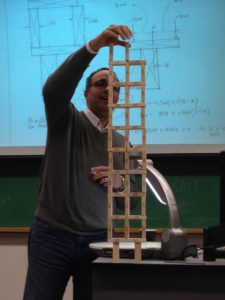Vibrations are everywhere, from seismic and ocean waves to vibrations in suspension bridges, aircraft, and oscillations of carbon nanotubes. A fundamental property of vibrations and waves is that they carry information about the source and the medium in which they travel. This information is often hidden in noisy, biased measurements traversing through random and complex media. Prof. Hernandez seeks to attain a fundamental understanding of the qualitative and quantitative aspects related to the extraction of physically meaningful information from waves and vibrations measured in materials, solids, and complex structures. The extracted information can be used for various purposes, such as: finding hidden defects/damage, estimating excitation sources, identifying elastic constants of the medium, and monitoring internal stresses/strains.

Dr. Hernandez is an Associate Professor of Civil/Structural Engineering at the University of Vermont, USA. His research has found applications in earthquake engineering, structural health monitoring, bridge engineering, biomechanical engineering, and power systems. Dr. Hernandez and his students have published in journals such as Earthquake Engineering and Structural Dynamics, ASCE Engineering Mechanics, Mechanical Systems and Signal Processing, Structural Control and Health Monitoring, IEEE Trans. of Network Science, and ASCE/ASME Risk and Uncertainty in Eng. Systems. His research has been funded by multiple grants from the National Science Foundation (including a CAREER award), NASA, FHWA, and the Vermont Agency of Transportation.
Courses Taught: During more than 20 years of teaching in various countries and universities (in English and Spanish), I have taught the following courses: Advanced Mathematics of Engineers, Statics, Mechanics of Materials, Applied Mechanics, Structural Analysis, Advanced Structural Analysis, Structural Dynamics, Earthquake Engineering, Reinforced Concrete Design, Uncertainty and Risk in Engineering Systems, Reliability of Engineering Systems.

